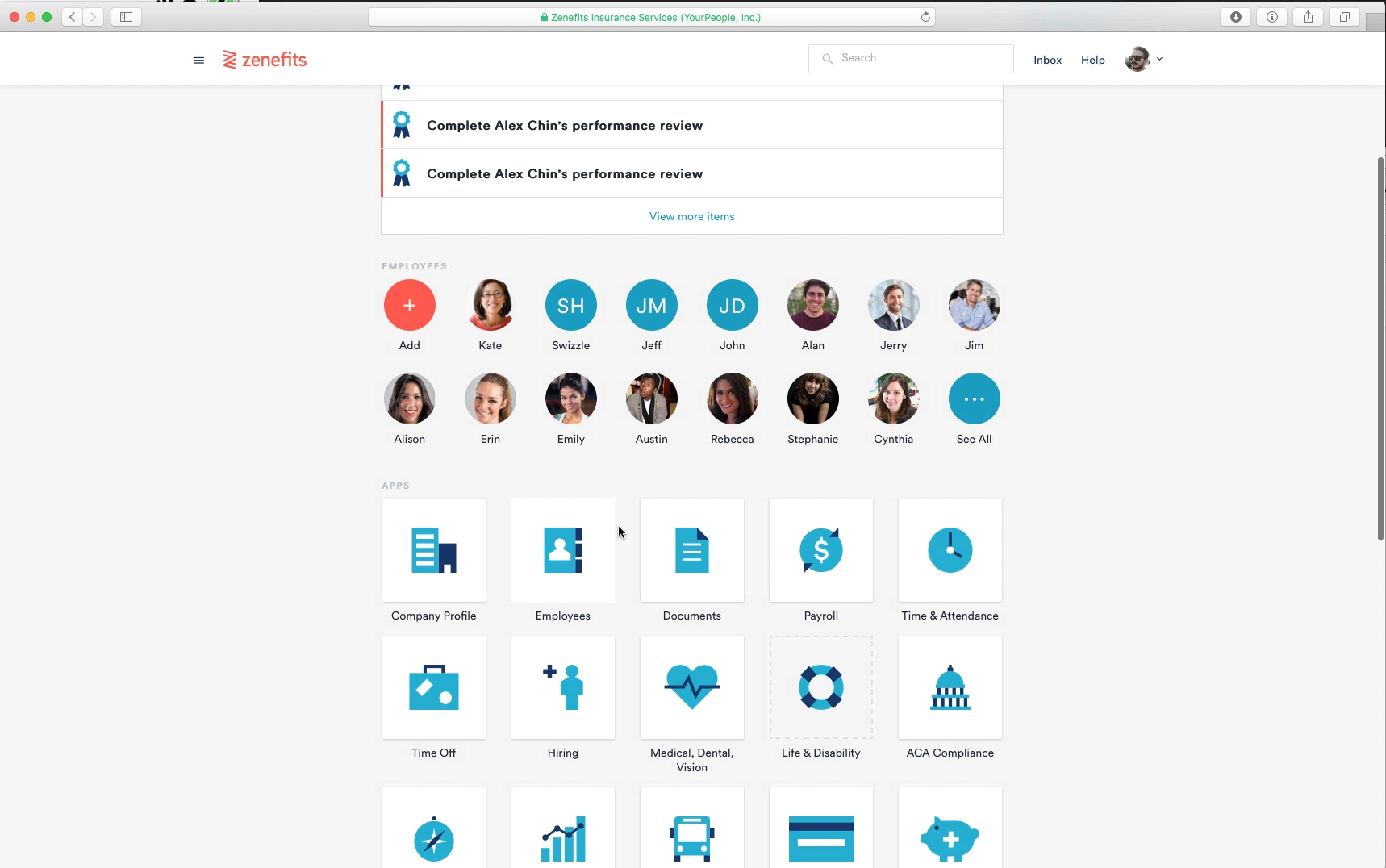With more companies exceeding the 100 people threshold, the need for proper HR has never been so great. HR work is complex, involved, and ubiquitous. Not investing in HR means you are risking your talent pool. Keeping a close eye on the entire employee journey can be tough. From hiring to training to evaluation, it takes a lot of energy and resources.
This is why many companies employ HRMS tools, or as they are broadly called, Human Resource Management Systems. These tools have proven to be functional and, as evident by the booming industry, popular. More and more competitors arise, standards are being raised, and picking a single solution can be tough.
This is why we decided to cover this topic and cover the question "What is Human Resource Management System?". We want you to ease into the world of HR systems by providing you with the basics. There is a lot to cover in one go so let's not waste any time and start by looking at what is an HRMS tool.
What is a Human Resource Management System
If you are here, then you probably heard at least something about these systems as this isn't something you'll overhear someone discussing on the streets. Anyways, a Human Resource Management System, or as they are more commonly referred, HRMS is a mix of processes and systems that help experts connect HR management with IT. This is the textbook explanation, in reality, HRMS tools are far more complex.
Typically, an HRMS tool is used for recruiting, evaluating, and grading employee performance and behavior. It also can be used to perform payroll management, approve vacations, track attendance, career progression, and many more things of which we'll discuss in a bit. Another core feature of these systems is they allow you to automate mundane and time-consuming work so that your HR staff can handle more pressing issues. HR tools are good at providing you with a holistic view of the entire company workforce and can even be used to homebrew talent.
Why Do Businesses Need HRM Tools?
So as we established, HRM systems are quite complicated and packed with many different things, but we haven't discussed why a company might want to use one. And to start answering this question, we first must ask ourselves, where can your talent meet innovative tech? The answer is in an HRM system.
Let us explain. When your employees are busy solving the issue as to who will use the printer first, your competitors are focusing on work. You see, HRMS allows you to automate a lot of things, including human resource business processes, payrolls, transactions, and, most importantly, compliance with your internal policy.

They remove the paperwork from your HR staff and allows them to focus on solving the printer issue first-hand. And this isn't something we've come up with out of the blue. Most, if not all, big-name companies such as Google, Microsoft, Target, Walmart, etc. use a Human Resource Management solution.
And it isn't about automation alone either, these systems helped break down bureaucracy and "flatten" many organizations. We all know that when visible bureaucracy is eliminated, innovation and risk takes place. Smaller companies can also benefit from HRMS tools. They allow them to increase the growth rate and raise productivity by establishing a friendly competitive environment.
Here are some other benefits HRMS tools can deliver:
- HRMS tools can offload a lot of simple work. Tasks such as the input of personal information, which is often handled by HR, can be delegated to employees as it is no different than filling out a social media account.
- HR tools are often packed with robust security systems in place. And no wonder, HRMS tools are directly tied to company and personal data as that is their core work assets.
- Virtually every HRMS solution gives you the ability to customize and adapt employee workflows to meet your company's policies.
- Managers alongside HR can schedule reminders using emails, in-app notifications, etc. which can improve message acknowledgment and free-up time.
HRMS Best Practices
Almost every HRMS tool is beneficial but knowing how to take full advantage of the system requires some prior knowledge. To make things easier for you, we piled up some of the best practices that you can take advantage of as soon as you get access to a tool.
Information Sharing
Another great benefit HRMS tools deliver is information sharing. Spread news about clients, objectives, sales, and management using HR tools so that your employees can be in the loop more often. If the tool allows for it, you can also share strategic information about the course of the company. Being open about company plans will give employees a sense of belonging and show them the direction you aim for.

Evaluation System
The meat and bones of HRMS tools is the evaluation module. This is the most important aspect of the system as with it, you can keep tabs on various performance metrics. We suggest that you use this module to establish a mandatory self-assessments routine, which you can then use as a basis for questionnaires for other employees. Also, make sure that your HRMS tool follows your employee's achievements and training attendance so that by the end, you can form an unbiased feedback letter.
Performance Components
Use your HRMS tool to outline the variables needed to be achieved by your company for your employees to get a salary raise. Giving them a clear sales objective will allow them to think out of the box and develop new ways to sell more instead of wait for a company to become more profitable over time.
Performance Appraisal
All HRM systems come equipped with a tracking module for performance management. Chances are, it also has a dedicated appraisal module. Use it to provide not only constructive criticism but appraisal from all over the company. Whether it is peers, subordinates, or management, the person on the receiving end will surely be happy to learn that they are valued. Doing so will also allow you to learn about potential leaders, which is required by higher positions.
Improve Your Working Environment
One of the key things HRMS tools allow for is feedback gathering. You can use this functionality to gather vital information about your workspace. Also, you can learn how to make it even more functional to the people working there. Doing so will not only demonstrate that you truly care but help you retain talent. Not to mention the boosted morale.
How to Choose an HRMS Tool For Your Company
And now, for the most interesting part, how to pick an HRM system for your company. As you know, these tools are complex and provide a lot of benefits, but it doesn't mean they are universally applicable. You will need to do a lot of prep work before even starting your search, which is what we will talk about in this block.
1. (Optional) Reconsider Your HR strategy
If you are committed to the idea that your company needs a proper HR solution, then you should also take a look at your current HR strategy (if you have any). The reason why you would want to do a restructuring is that with the system on your side, you can automate a lot of work that was previously done by people. That way, you can save a lot of time in the future as it can take a while before you come up with new tasks to fill the gaps. If you are building from scratch, your HR department, then you might want to skip this phase as you'll have to do this naturally anyway.

2. Settle on Specific Needs
Picking an HRMS tool means that you'll use it long-term. We suggest that you not only look at what you need now but what you might need in the future. See if the system is scalable too because if your business starts to grow and you will notice that your current tool is not up to snuff, expect a lot of the same work you did in step 1. From experience, your HRMS tool should including the following functions:
- Payroll Management Module
- Proper analytics
- Attendance tracker
- Benefits
- Performance and compensation system
- Recruitment and onboarding tools
- Schedule management
- Report system
If the tool of your choice doesn't have these, then maybe reconsider as these are not only standard but form the majority of the human resource management system software feature set.
3. Define the Budget
It is wise to settle on a specific budget when shopping for an HR solution. You will not only have a clear pricing direction but will most not go overboard. If you have no idea how much a tool can cost, pick the ten popular vendors and average out the price. Also, you might want to learn about implementation expenses and monthly or quarterly fees as these can disrupt things for you too. Lastly, make room for some extra expense but keep it in frames.
4. Make a Top 3
This might sound trivial, but it isn't. Out of the entire pool of systems you've looked at, make a list of top 3 performers. Analyze how they meet your function requirements and see if any of them offers a demo or trial run. Ideally, carefully learn about their policies, too, as these might impact your work too.
5. Research Vendor Support
You might want to read some reviews or get a quote from someone who used the tool before buying it. It might prove to be daunting and time-consuming, but it is important. If you find yourself between a rock and a hard spot, support is where it is at. You might also want to learn about their data protection policies and for how long they have been working in the industry. The longer they operate, the better the tool is, the fewer bugs it has, and the more you will get out of it.
6. (Optional) Run the Demo
It is wise to run a demo if offered. After all, better see it once in action than read about the many good and bad reviews scattered across the Internet. This isn't a mandatory step, but we highly recommend that you do it to avoid frustrations later.
A Couple of Alternatives to Take Note of
And now for the tools themselves. We picked three solutions that can fit various wallets and needs. These aren't the best HRMS software, but they are good enough to get you started. We'll briefly describe each so that you can have an idea of why we chose these.
TriNet
TriNet has been on the market for many years now. They not only have the technical skills to deliver a solid solution but the means as well. Just like other systems on the market, TriNet is cloud-based and offers a wide selection of systems, including health management, compliance with employment laws across many countries, and more. It is designed with SMB sized companies in mind, meaning it won't work in larger companies.
Zenefits
Positioning itself as a People Operations Platform (POP), Zenefits is an amazing solution. You can use it not only to manage HR functions but employee documents, benefits, payroll, time, and attendance, among other things. It launched back in 2013 and has gained a cult following among HR experts. The solution will work best in bigger companies, but the feature set does account for smaller-sized businesses.
Paycom
Built with mobile in mind, Paycom is an HRMS solution like no other. The vendor strives to blur the lines between mobile and desktop so that companies can leverage the power of the system from anywhere. It works well in both small and large organizations and has a strong focus on delivering the best bang for your buck. The support is responsive, and the knowledge base is big.
Final Takeaway
And that answers the question "What is HRM Systems are great tools if you want to power up your human resource department. They provide enough automation, and they are highly scalable. If you are having doubts, we urge you to try any of the above systems. If you need help moving your data to one of the tools above (or any other for that matter), be sure to let us know.
Made your choice?
Try out new platform.








